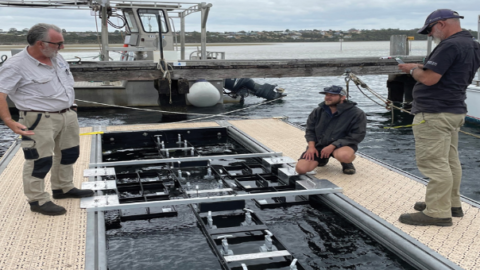What do you feel are the most important considerations when selecting and installing a progressive cavity pump?
Question answered by Peter Vila, Managing Director of seepex Australia.
There are three key factors to consider when selecting and installing a progressive cavity pump:
Consider the pumped media.
As with all pump selections, when choosing a progressive cavity pump, the properties of any pumped media must be carefully considered. What is the chemical composition? Viscosity? Pumping temperature? Solids content? Nature and size of solids? Is it shear-sensitive? Abrasive? Potentially hazardous?
What are the process requirements?
Again, this is not really different to the basic criteria for selecting all pump designs. Flow rate and discharge pressure as a minimum, together with an overview of suction conditions.
For example, lift or flooded? Inlet pressure? Temperature? Industrial or hygienic product handling? Mode of control – DOL/VVVF/other?
Are there any installation and/or environmental considerations?
This is an area where many variables are possible. Fixed or portable? Horizontal or vertical? Dry or semi-submersible? Reversible flow? Indoor/outdoor? Harsh or hazardous environment? Specific customised drive? Special sealing requirements for product containment? Overpressure and/or dry-run protection? (It may surprise you to hear that over-pressure and dry-run, along with incorrect pump selection, are the most common causes of premature failure on progressive cavity pumps.)
With due consideration to the above information, it is possible to confidently configure a progressive cavity pump which is fit for purpose. Special care should be taken when selecting pump speed, giving due consideration to pumped media – viscosity, solids content and abrasiveness. It’s quite common for the uninitiated to select a smaller pump running faster, with a view to saving a few dollars on the initial purchase, only to find their maintenance costs have soared out of control due to an inappropriate pump selection.
Typically consider 300-350RPM as a guideline when initially selecting the suitable speed for a progressive cavity pump, then adjust down, or up, from this point, depending upon pumped media characteristics. It’s not uncommon to see progressive cavity pumps running as low as 75-100RPM on media with high viscosity or solids content, or at the other end of the scale, up to 1,000-1,500RPM on easily handled media with high lubrication properties. The important thing is to ensure you have the necessary information and experience to make a confident selection, or failing this, that you have the contact details of a reliable source and can seek their assistance.
For more information on progressive cavity pumps, please contact seepex Australia on (02) 4355 4500 or [email protected].

















